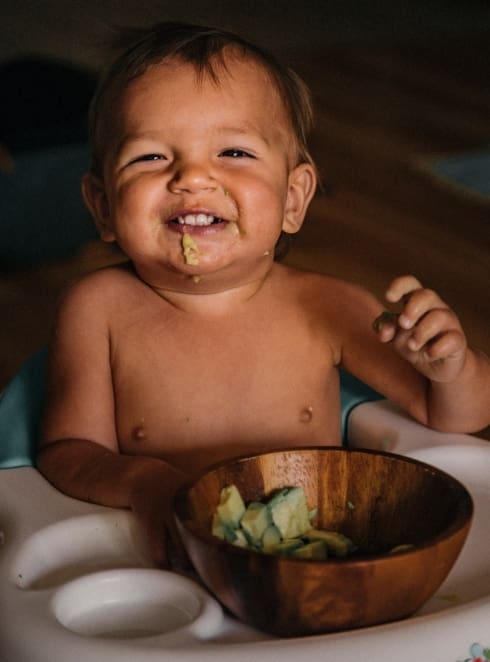Given all of the time and effort that goes into spoon-feeding kids, teaching them to grasp for snacks and switch to solids, we think Canadian ought to start giving the #selfeed milestone the recognition it deserves! Our friends at PC Organics agree, creating baby and toddler products (smoothie melts, fruit and veg oat bars, animal cookies and more) with the guidance of dietitians, ensuring each snack is just right for your little ones’ hands and varying ability to chew, to help make the journey to self-feeding a successful one. We quizzed on PC Organics partner Nanny Robina, one of Canada’s most recognized parenting experts, on her top tips for smoothly transitioning toddlers to feed on their own. —Vita Daily
Hi Nanny! Why is self-feeding such a huge breakthrough in a child’s early development?
From giving your child independence to developing fine motor skills, self-feeding is such an important milestone in a child’s early development! Through self-feeding, your child is also learning to monitor their own needs. For example, they can respond to hunger and stop eating once they’re full. Self-feeding is also fun! By touching and squishing their food, your child will learn about different foods and textures hands-on.
When do most children begin to self feed? What are some of the signs a child is ready to start feeding himself or herself?
Many children begin to show signs of being interested in feeding themselves around seven or eight months! You may begin to notice they’ve begun to show signs of independence, such as sitting up and leaning forward, grabbing the spoon while you’re holding it, or letting you know when they are full by turning their head.
What are your top tricks and tips for parents when it comes to encouraging/supporting this important stage of early development?
Let your child practice! Whether it’s with their hands or with utensils, your baby will need many opportunities to practice self-feeding. Children also learn from modeled behaviours. By eating meals as a family, your child will observe how everyone else feeds themselves, as well as other appropriate mealtime behaviours, encouraging them to take steps toward independent eating. I would also recommend keeping plenty of snacks on hand. Babies and toddlers love to snack so as you’re running around, make sure to keep dry foods handy. Foods like PC Organics Whole Grain Puffs Puffed Cereal are great for on-the-go snacking and won’t make a mess.
What are the best foods to give a child in the first stages of self-feeding?
The team at PC Organics has expanded its range of innovative products which are perfect to give your growing child so they can safely (and happily) feed themselves with tasty and nutritious snacks. One of my favourite products from this line is the PC Organics Smoothie Melts because they melt in the mouth and require very little chewing. I also love that they come in multiple exotic flavours, such as Banana Mango & Passion Fruit and Banana Strawberry, to help develop baby’s palate from a young age. The PC Organics Raspberry and Beet & Oat Bars are also a great option because they are made with fruit, vegetables, and whole grain oats. These bars are tasty, convenient and individually wrapped so that they can be portioned into squares for easy grasping.
What’s your best advice around how Canadian parents can embrace their child’s #selfeed milestone?
Take advantage of the extra time it gives you! Let your child have snack time nearby while you work or put in a load of laundry. You can also document their self-feeding journey. While 96 per cent of Canadian parents of young children agree that teaching a child to self-feed is an important part of their early development, only 50 per cent mark the milestone publicly. Snap pictures of your child’s messiest moments and share them on social with #selfeed and PC Organics self-feed Instagram stickers to celebrate their accomplishments!


Be the first to comment